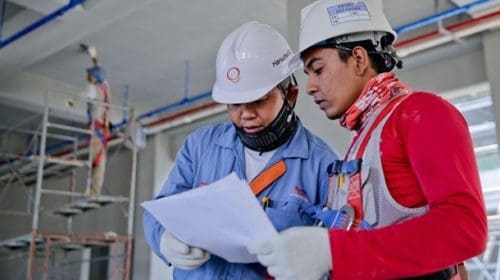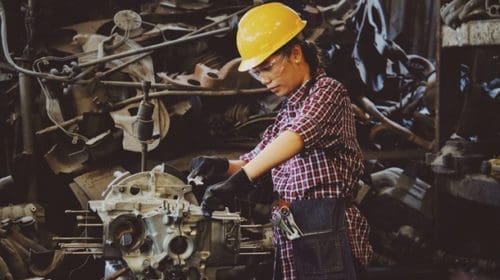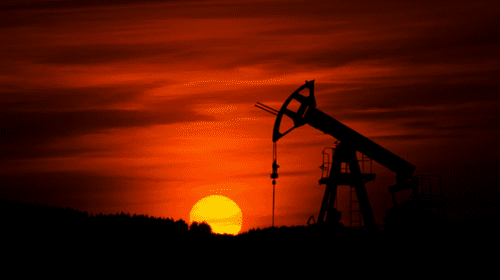The oil industry is a key part of our contemporary infrastructure. It helps to power our homes, supports agriculture, and keeps our transportation systems on the move. It’s also a key employer, representing around 5.6 percent of the total U.S. workforce. As with any sector that both underpins the economy and has responsibility for a significant number of workers, there is also an imperative to maintain a high degree of safety.
Contrary to the situation today, safety has not always been a top priority in the oil industry. Risks were numerous throughout the 19th century — including the inadequate storage of oil which led to the release of vapors that contributed to lung cancer in many workers, not to mention the prevalence of fires and explosions.
It wasn’t until the early 20th century that automated machinery took employees away from hazardous oil exploration activities that were previously undertaken by hand. Since then, we’ve seen the rise of industry chemists and engineers who have been tasked with undertaking developments specifically in the name of safety. Still, as the industry continues to grow, getting bolder in its ambitions, so too do the dangers evolve.
However, alongside the rise of these risks comes the implementation of technology and practices that can help to mitigate them. We’re going to take a closer look at how the industry is working to increase safety in the contemporary environment.
Planning and Preparation
One of the ways in which the industry continues to recognize the need for safety is in its preparedness. It’s much easier to prevent or respond to issues when you’ve taken time to truly understand the scope of risks, what the key contributors are, and how disruption or danger can arise from these. Therefore, safety managers are placing an emphasis upon the ongoing development of planning and preparation processes for the various forms of operations that are undertaken in the industry.
This is evident from the very beginning of a project. Even as construction of facilities or platforms is due to be undertaken, one of the key aspects of safety consideration is a clear induction process for every contributor. This sets out all the hazards that are evident on the site, the potential consequences, and the equipment and processes specifically designed to prevent and mitigate damage. Just as importantly, this aspect of planning and preparation communicates clear expectations of behavior to workers, and their responsibilities to not just their own health, but that of their fellow workers.
The planning process for safety managers will include the more obvious aspects of worksite safety, such as avoiding routes that offer a high risk of vehicle collisions during transportation of materials, or creating disaster recovery documents for offshore rigs in geographical areas that are subject to hurricanes and earthquakes.
However, there is an increasing emphasis on issues such as worker mental health. A recent study found that oil and gas industry workers tend to suffer from anxiety and depression more often than the average population. Poor mental health in such hazardous environments can lead to errors, and additional risk for everybody involved. Therefore, it has become imperative to plan schedules, benefits, and conditions with worker wellbeing in mind.
Maintenance
The machinery and tools in the industry can also present potential risks. This isn’t simply about ensuring correct usage. There must be protocols in place to ensure that equipment is in full and safe working condition, and that upgrade procedures and timelines are communicated effectively.
We only have to look to the 1988 Piper Alpha disaster to see how maintenance plays a role in safety. Routine maintenance to a single pressure valve was unfinished, and this status was not communicated to supervisors or other teams. As a result, there was a knock-on effect where a crew that was unaware of the valve’s status restarted it, resulting in a gas leak due to the incomplete maintenance, which in turn caused an explosion that killed 167 workers.
As such, there is frequently a focus on how the industry can improve its approach to maintenance in order to ensure that issues can be avoided. In the last few years, predictive maintenance software and procedures have become widely deployed. This is applicable to a variety of assets, from fleet vehicles to control systems and individual machines.
Predictive maintenance software utilizes sensors throughout the systems to receive data on conditions, usage, and performance. It then analyzes this information to predict the potential for issues and recommend a maintenance strategy. While predictive maintenance differs from preventative maintenance — which deals with the periodic scheduled updates — it is the collaboration of both of these methods that helps to make for robust procedures.
Technology
We live in an increasingly technologically advanced world. This not only presents itself in the enormous advantages to our lifestyles that digital tools provide, but also in industrial safety. The oil industry is continually exploring how tech can help improve working practices and minimize risk.
Logistics and transportation have been key recipients in this area. The rise of the internet of things (IoT) has provided fleets that transport oil, other sensitive materials, and machinery with safe management solutions. Artificial intelligence-driven route management systems take data from vehicle tracking devices and analyze this alongside weather reports and road conditions. These AI systems provide real-time recommendations and adjustments to journeys, ensuring cargo gets to its destination without unnecessary risk or disruption.
Drones have also become a common tool in the oil industry as of late. These take the necessity for human workers to attend potentially hazardous inspections out of the equation. Drones are being flown over drill sites to provide video feeds of pipelines, using onboard thermal imaging to identify leaks. When issues do occur, unmanned aerial vehicles (UAVs) also provide responding teams with a full and accurate picture of the logistical and environmental hurdles in the way of addressing the situation, allowing them to plan more effectively.
Conclusion
As a key industry in the U.S., it is imperative that the oil industry continues to take its responsibilities toward safety seriously. Therefore, we are seeing a greater emphasis on planning and preparation procedures, alongside smarter approaches to maintenance. It should also be reassuring that there is an enthusiasm for exploration of how technology can keep workers, environments, and the general public safe.
Indiana Lee lives in the Northwest and has a passion for the environment and wellness. She draws her inspiration from nature and makes sure to explore the outdoors regularly with her two dogs. Lee also has experience in owning and operating her own business. Feel free to follow her on Twitter @indianalee3.
Oil and gas operations are commonly found in remote locations far from company headquarters. Now, it's possible to monitor pump operations, collate and analyze seismic data, and track employees around the world from almost anywhere. Whether employees are in the office or in the field, the internet and related applications enable a greater multidirectional flow of information – and control – than ever before.













1 comment
Comments are closed.